Chapter 4: A Guide to Hreflang Best Practice & Implementation
Now that we’ve explored what not to do, let’s draw our attention back to what you should be doing in order to achieve results with your international SEO strategy. Here are the 8 things you need to do for success, as explained by Aleyda Solis:
-
Correctly identify your international target markets: Which countries and/or languages are profitable and feasible for you to target and serve from a business perspective?
-
Check if you can hire someone native: You’ll need someone who can support you in the operations for your target market.
-
Establish the best web structure: If you’re targeting new countries, which web structure should you use – ccTLDs, subdomains or subdirectories?
-
Geolocate: (In case you’re targeting a country and you’re not using a ccTLD.) The best way to do this is through the Google Search Console geolocation feature.
-
Localise: URLs, navigation, content, titles, meta descriptions, headings, main text, currency, etc. If possible, the experience and design should be developed to better address the specific behaviour of the target markets.
-
Specify your language and country targeting with hreflang: Add hreflang annotations for each of your variations in order to give an additional signal for Google to serve the most relevant version in their results to the targeted audience.
-
Grow your authority: Have a content and promotion strategy in place to grow your popularity among each community and industry, building links from local sites.
-
Monitor your ranking: For each of your targeted markets, see if you’re ranking with the right pages and the relevant queries, growing your presence as desired vs. the local competition.

The businesses that succeed internationally are most often the ones that communicate internally and have international teams that continually learn from one another.
Businesses that are successful have a central international SEO strategy, instead of several independent local or national SEO strategies. There needs to be a team or a person that is responsible for SEO on a global level and that provides guidance for the local teams involved. The SEO teams that are responsible for the different markets have to communicate with each other, in order to exchange insights and share tactics, and they must realise that they are stronger together than fighting for themselves.
Crucial elements of international SEO, such as domain strategy, technical website optimisations, or hreflang, should always be managed centrally. Activities that are best executed locally, such as content creation or outreach, should be supported by central guidelines and should always be evaluated from a global perspective. Processes that benefit all markets (e.g. create in one language > adapt to all languages > localise for every market) are priceless.
It’s a hackneyed phrase, but “think globally, act locally” definitely is the right way to go in international SEO.

Let’s examine the key aspects you’ll need to implement within your international SEO strategy in order to achieve the best results possible.
Market research
Before planning or launching anything, make sure you do the required market research around your desired locations. Launching a new website in a new country may seem like a good idea, but you need to know it will be successful before investing in such a substantial project.
A simple place to start to ensure international success: research and validation to ensure your efforts will provide business value.
You need to realistically assess the supply and demand of potential new markets in advance of rolling out any launch plans. Before getting into the technical planning, make sure you ask yourself the following fundamental questions:
1. What is the existing traffic and conversion potential?
By simply using Google Analytics and Google Search Console data – we can discover:
What countries visitors are coming from
What languages they use in their browsers
How many conversions are obtained from each country
How many conversions are from users speaking languages other than English
Whether the conversions generated from a specific country or from users speaking a specific language justify the cost of creating a website version targeting them
Whether the potential traffic you may earn from that country or language is enough to achieve break-even in a sustainable amount of time2. Which set of languages and countries is the business going to target?
This question is a consequence of the previous one. Once you know which global and targeted language versions you need, it’s only now when you can finally ask what solution is ideal: subfolders, subdomains or a ccTLD?3. What kind of business does the client/company run?
This can determine the main international SEO architecture you will use. For instance, ecommerce websites can have technical peculiarities that will make you choose a multi-country and ccTLD strategy. On the contrary, lead-based websites can have successful internationalization of their business with a simpler multilingual and subfolder-based international SEO strategy.4. Is the legislation related to the business the same all over the world or are there important differences that must be considered?
SEOs tend to not think about legislation, but it really can affect their jobs, especially in international SEO. Countries legislate industries differently and even have different legal obligations. A subfolder or subdomain strategy may not work in this instance, meaning a website will be obligated to use ccTLDs from the start.5. What are the search behaviours of people in your target markets?
Local cultures determine what and how people search for products, and the differences can be so big that they deeply influence how to develop a website. You need a platform that offers the freedom to radically differentiate the navigation, aspects and content presented on the main landing pages to fully localize the website’s versions, and this may mean being forced to create these versions on specific ccTLDs, if the platform is rigid and cannot offer the freedom you need on a subfolder level.

Explore your Google Analytics account to find out where your website traffic and conversions are currently coming from to help you identify where there is already interest and engagement with your brand. Go to the ‘Geo’ tab under the ‘Audience’ section where you can see users split by location and language.
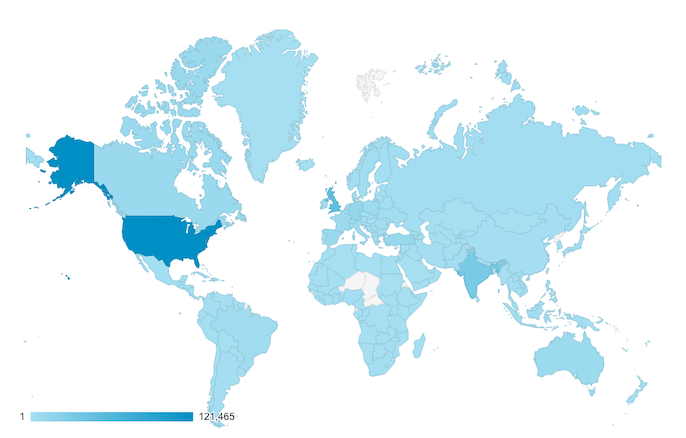
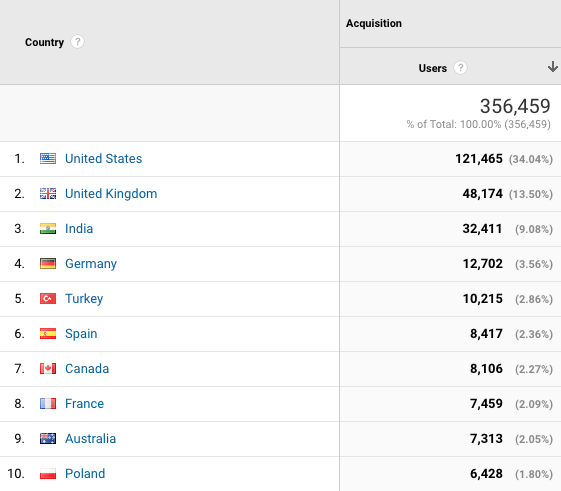
Another good source for benchmarking current international reach is in Google Search Console. In the ‘Performance’ report you can filter by country to see which countries your site is already ranking in without active targeting on your part, as well as how many people are clicking through to your site from international SERPs.
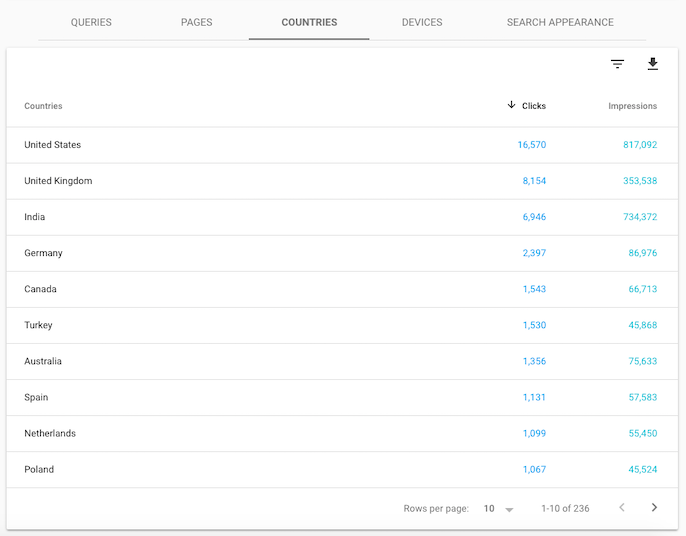
Also, be sure to validate the search volumes of any keywords you plan to target for each market to make sure they will be profitable enough for your business to justify launching a new site version to target them.
Geotargeting
Geotargeting is used to direct a website at a particular geographic location. This can improve rankings in that country, but this will impact performance in other regions or languages, as Google explains:
You can target your website or parts of it to users in a single specific country speaking a specific language. This can improve your page rankings in the target country, but at the expense of results in other locales/languages.
Use geotargeting to better connect your website version to its corresponding country, which will help search engines target the right page versions to the right markets.
In the early days of Google’s geotargeting, server IP addresses used to be a signal to decide what country a website was targeting. The system is much more sophisticated now, and a variety of different sources are used in combination to infer geotargeting, which is much more useful than using just a single IP.
Heads Up!! IP Addresses Are No Longer Used For Geotargeting or Local SEO
The latest edition of our #DeeplyNotes Webmaster Hangouts Recap is now live on the DC Blog:
https://t.co/AsRxeE2brM— Lumar (@Lumar) July 28, 2018
Here are some of the elements Google in particular looks at when determining the geotargeting of a page and deciding which country it is relevant to:
- ccTLDs
- Correct hreflang implementation
- External linking from sites within the target market
- Visible on-page content (e.g. language, addresses, phone numbers)
- Anchor text language
- Server location (which is now a light signal)
- Google My Business settings
- Google Search Console geotargeting settings
If you don’t have a ccTLD which has automatic geotargeting, ideally you should have a distinct section of a site for each language and country version for Google. Subdomains or subdirectories work well here.
Google requires a distinct section on a site for geotargeting to be understood.
-John Mueller, Google Webmaster Hangout
Here are some tips on geotargeting your site for search engines, and Google in particular:
- Use locale-specific URLs such as ccTLDs, or subdomains/subdirectories with gTLDs – this works on a page or site level
- Use Google’s ‘International Targeting’ report if you have a gTLD which only targets one country – this works on a site level
- Use hreflang – this works on a page level
Localisation
In SEO, localisation involves tailoring a website version and its content to a particular target audience and their culture. Successful localisation isn’t about word-for-word language translation, so this is where market research and knowing your audience is incredibly valuable.
Localisation isn’t about translating words into a particular language, it’s about translating those words into something meaningful for a unique culture.
Before entering a new market or country, devising a localisation strategy is of the utmost importance. It is vital to get to grips with your target country’s culture and worldview to really speak their language.
Cultural differences have an enormous significance and must be taken into account when building international search strategies – this is where localisation rather than translation is essential. It also requires a deep knowledge of regional trends and expertise in regards to search engines and the social media platforms used by a target audience.

A localised website will speak to the user in their own language and provide them with an online experience that feels native to their target market, which instils trust. In order to achieve this it’s recommended that you have a native speaker on board who truly understands the language and culture of the country you want to target.
The biggest issue that many sites face when getting internationalisation right is they don’t focus on ensuring localisation is done well. If your translations are as good as what Google Translate can do then you are not doing enough for your visitors. When it comes to onsite content and meta titles and descriptions for internationalisation is to remember that Arabic and Hebrew are written from right to left and Chinese and Japanese can be written horizontally or vertically, so you might also have to think about different content layouts in your templates in some countries.
From a technical perspective, one of the biggest challenges in internationalisation is if you encode the URLs to handle local languages or not, as too often the easy option is you use English characters. The issue of not localising the URLS is that in many non-English markets the users can’t understand the English characters so will certainly impact CTR but can also impact sharing of the English URLs on social media.

These are some of the elements you’ll need to localise, not just translate:
- URLs
- Navigation
- On-page content
- Headings
- Titles
- Meta descriptions
- Images
- Currency
- Products
- Delivery options
- Customer service support
- Overall web experience
Page layout, design and the overall experience needs to be considered. People browse and digest content very differently across the world.

Source: Amazon (UK)
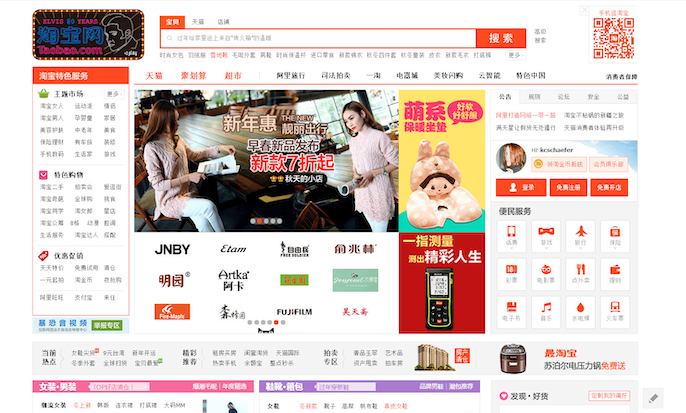
Source: Taobao (China)
In a perfect world, I’d recommend appearing as local as possible. This means you’ll have a ccTLD, bring in strong links from the target country, localize tone and photography in the content, as well as office addresses/phone numbers… and even the server if possible. The more local your site is to a specific country, more trust is built for both the user and the search engine – signals it needs to be successful.

Any keyword research needs to be localised as well to make sure you’re getting an accurate idea of how your target audience is searching. Use tools like Google Trends to do spot checks on key terms and make sure you’re using the same language as them.
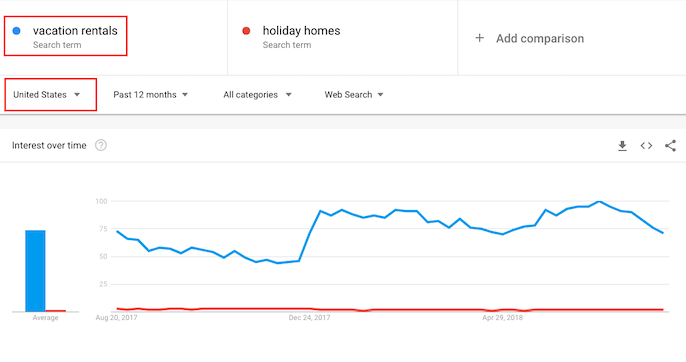
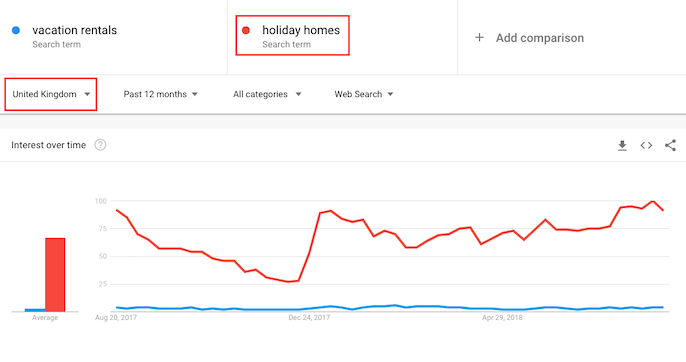
You’ll need 1st class translated and targeted content if you want your international SEO efforts pushing up the SERPs. Get the content re-written for languages and cultures, instead of bulk translating for multiple countries. Consider the language nuances – some words and phrases may not be translatable, the meanings can be lost in translation and make no sense to the reader. Give the best possible experience to your visitor by making your internationalized pages the best they can be. Do well with international search by serving your audience the quality content they deserve, then go get your hreflang attribution sorted.

One of the main reasons why you need to localise rather than translate, is that languages will have words that don’t have proper equivalents in other languages and have a complexity that is truly untranslatable. To demonstrate this point, take a look at some of these examples and see what happened to them at the hands of Google Translate:
Komorebi (Japanese): The pattern of sunlight that is filtered through the leaves of trees.
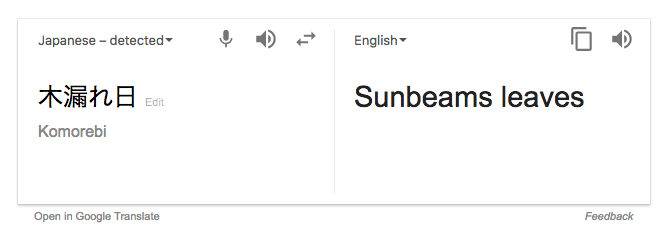
Jayus (Indonesian): A bad joke that still manages to make people laugh because of just how bad it is, or at least react with a good nature rather than irritation.
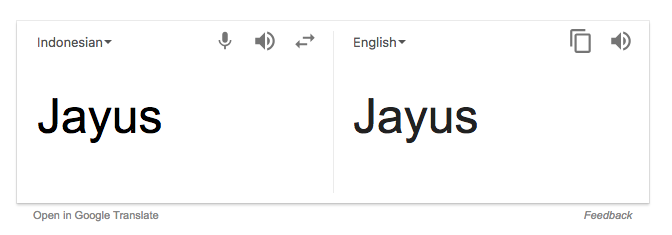
Sobremesa (Spanish): The time you spend after an afternoon or evening meal socialising, relaxing and spending time with the people you ate with.
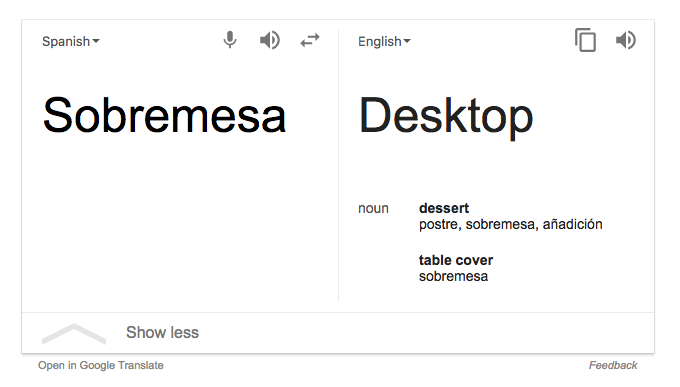
One of the most common mistakes I have seen in terms of internationalization is the over-use of Google Translate to machine translate content on a website. The irony is not lost on me that Google Translate is a tool that Google Webmaster Trends Analysts such as John Mueller have recommended not using for large-scale website translation. Google Translate is a remarkable machine translation tool, one that is getting better every day, but it is better for one-off translation projects. Machine translation is still not as good as human translation. In creating content for SEO, it’s important to use well-written, natural language, and that remains the rule when localizing content for other languages.

Content for international sites must be engaging for users and unique. Auto-generated content is not engaging, and content duplicated across pages targeting different countries is not unique. When you’re translating and localising content, be mindful that this should always happen in the proper HTML web structure for each version, to ensure that this content will be picked up by search engines.
Writing unique, localised content won’t just help your users; it will also help to stop search engines from folding different international-targeted URLs together and indexing just one if they suspect duplicate content issues. This can happen in cases when a site has multiple variations of the same language page targeting different countries with almost identical content.
Google folds together different country versions in search unless the content is unique.
-John Mueller, Google Webmaster Hangout
Building authority locally
An important thing to remember is to invest in building the authority of your market version sites in their respective locations. Inspire and incentivise the local community to start talking about and sharing your website version. This is a great way to start building natural links and brand awareness.
You can have a solid technical implementation, but this doesn’t mean much without strong content or a solid product offering combined with an engaged audience. Search engines will do their part in spreading your content, but you need to put the work in to get local communities excited about your brand.
Focus on balancing engaging content, relevant links and technical implementation, as you need all three for success in an international market.
In conclusion
Prioritisation and careful planning are essential for global success. It isn’t as simple as rolling out a batch of new international websites and seeing what happens. You need to make sure you have the resource to be able to give each language version the time and attention it needs to perform well in organic search, from making sure each version is structured in the best way to appeal to users within international SERPs, to hiring native speakers to make sure the language on-site is really speaking to people.
Once a realistic strategy is in place, then you can focus on serving useful, engaging content to your target audience, which will only get in front of them with the right technical setup such as hreflang configuration and URL structuring. If you can create an engaging experience for each of your international audiences as well as making sure that every website version is accessible and understandable to search engines, then you’re sure to have a winning strategy on your hands.

